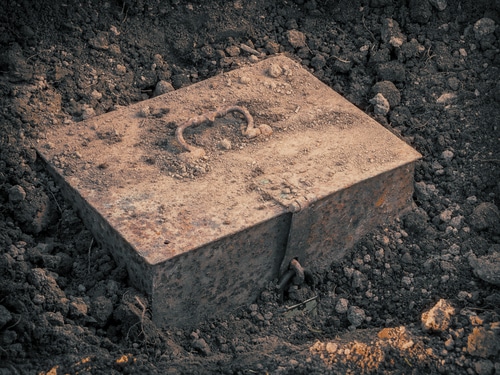As each of us walks our path through life, we often encounter uncomfortable situations that test our emotional ability to cope well with difficulties and challenge our mental strength. Sometimes, we endure these trials, pushing forward with sheer determination and force of will. However, in some cases, doing so misses the lessons that life offers us.
In situations where stress, tribulations, and discomfort threatens to overwhelm us, our subconscious mind has a tendency to take the wheel. In psychology, this is known as “forming a defense mechanism”, a set of thinking and behavioral patterns whose purpose is to protect us from mental and emotional harm, representing one of the 12 defense mechanisms. Among these self-preservation strategies, the two most habitual (and most commonly studied) are repression and reaction formation.
However, while both serve the same purpose, they do so in essentially different ways which usually leads to vastly different outcomes. For this reason, as well as due to their undeniable ability to impact and, in some instances, define various aspects of our lives, learning the difference between repression and reaction formation can be absolutely crucial for our long-term mental, emotional, and social well-being.
What Are The Main Characteristics Of Repression?
Sigmund Freud, the father of psychoanalysis, introduced the term “repression” in the late 19th century. He viewed it as one of the cornerstones of the human psyche and believed it was central in the development of many psychological disorders.
Definition of Repression
Modern psychology defines repression as a primitive (fundamental) defense mechanism that involves pushing (i.e. “repressing”) unwanted or distressing feelings, thoughts, or memories out of an individual’s consciousness, in order to deal with stress, anxiety, or traumas from the past.
Characteristics And Symptoms Of Repression
From the definition alone, we can find the first and main characteristic of this coping mechanism: it operates on the wholly unconscious level. In fact, this is the exact reason why it is so hard to notice and diagnose. However, there’s that old adage that “nothing stays buried forever”, which is all too true in this case.
For the most part, a person isn’t aware that they’re repressing thoughts or emotions. For example, someone who was bitten by a dog in their early childhood may develop a phobia of dogs in adulthood, without an obvious reason.
In most instances, this may not be evident even after the emergence of the related symptoms. Still, the fact remains that these buried feelings, thoughts, or memories need an outlet, which leads to different ways of manifestation:
- Psychological disorders, such as anxiety or depression, are a common repercussion of overusing repression;
- Dreams are a reflection of our subconscious mind and, as such, can serve as an outlet for repressed thoughts;
- Slips of the tongue can sometimes indicate the existence of buried feelings or memories.
In addition, repression is often followed by feelings of guilt and/or shame. When a person pushes down thoughts they believe are unacceptable or dangerous, they may start subconsciously believing that they are doing something “wrong”, even if that is not the case.

Is Repression A Bad Coping Strategy?
Although there is some degree of negative connotation to repression, it cannot be classified as strictly “bad”. Rather, it is a part of being human as everyone, no matter how mature or immature, represses feelings and thoughts to some degree.
However, when repression becomes a default operating method or becomes overused to the point of extreme, it can become a severe impediment to a person’s social well-being, as well as their mental and physical health.
How Are Repression And Reaction Formation Similar?
To understand both the similarities and differences between repression and reaction formation, first, we need to familiarize ourselves with the latter.
By definition in psychology, reaction formation is an intermediate (less primitive, more mature) defense mechanism that involves expressing the opposite of what one truly feels or thinks, in order to avoid acknowledging harmful or stressful thoughts and emotions.
With both strategies now defined, we can start breaking them down into core components, to see how they really function and relate to each other.
What Are The Similarities Between Repression And Reaction Formation?
While repression and reaction formation are two essentially different coping mechanisms, they do share a lot of similarities. We already mentioned some of them, but we’ll reiterate for clarity:
- Purpose: Both defensive mechanisms serve to protect the psyche from uncomfortable, unacceptable, or harmful thoughts, emotions, and memories.
- Awareness: Both strategies are almost exclusively employed on a subconscious level.
- Triggers: Both can be triggered by internal or external stimuli.
- Process: Both involve the redirection of difficult thoughts or emotions away from conscious awareness.
From the above, it may seem logical to conclude that reaction formation and repression are the same since they share so many commonalities on the core level. However, this is not the case. Although both serve to establish and/or maintain psychological equilibrium within one’s conscious mind, they do so in vastly different ways.
What Are The Differences Between Reaction Formation And Repression?
Despite obvious similarities, repression and reaction formation are two distinct defense mechanisms. Right off the bat, we can see one major distinction from their respective definitions alone:
- Repression is a primitive defense mechanism, which means it requires no conscious effort to employ. Rather, it takes place entirely in the subconscious.
- Reaction formation is an intermediate coping strategy, meaning that some degree of conscious effort is involved in its utilization.
Next, there is a big difference in how both mechanisms help a person cope with harmful thoughts and feelings (again, evident from the definitions):
- Repression entails pushing unacceptable thoughts, feelings, and memories into the subconscious. As such, we can say that it is a wholly inward-oriented process.
- Reaction Formation involves expressing the opposite of what one truly thinks or feels. In that, it is mostly outwards-oriented.
It is important to note that the consequences of using either process, whether inward or outward-oriented, can end up impacting a person’s life, as well as those around them, usually in a negative way. Therefore, it is highly advisable to seek alternative, healthier ways to deal with negative emotions and thoughts, mainly by adopting more mature coping mechanisms.

PIVOT Can Help You Deal With Repression & Reaction Formation
While defense mechanisms such as repression and reaction formation can provide temporary relief, they are detrimental to every aspect of your well-being. Fortunately, they don’t have to define or control your life. With PIVOT’s help, you can take that control back and give your life a positive turn.Our Glass House retreat is the perfect place to begin your journey to recovery, as it offers a safe and serene space where you can explore and address the underlying causes of your defense strategy. Our compassionate and mindful professionals will accompany you every step of the way, start to finish, and help you develop healthier coping strategies. Reach out to us today and begin down the road of recovery that will lead to happier and more committed relationships and healthier ways to deal with tribulations in your life.
